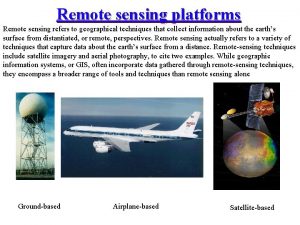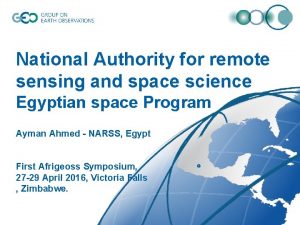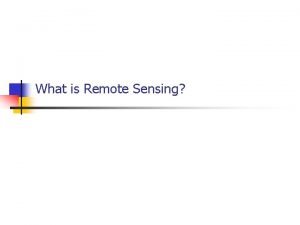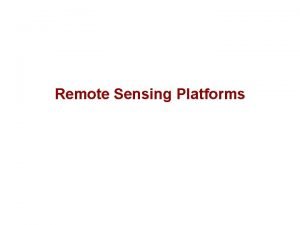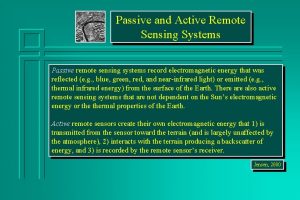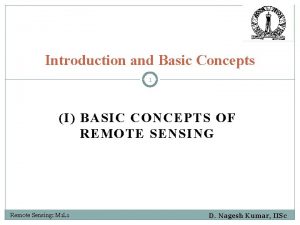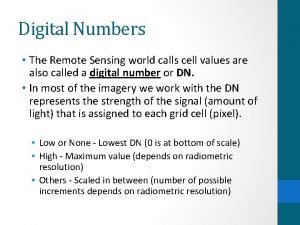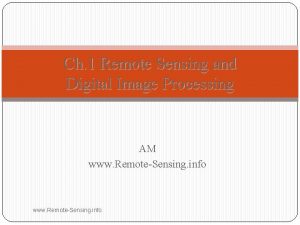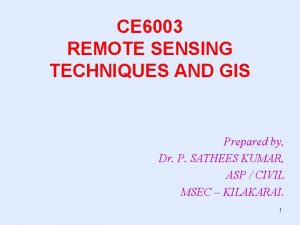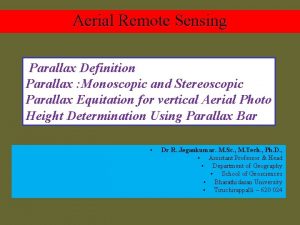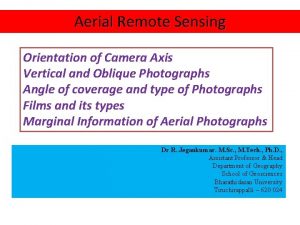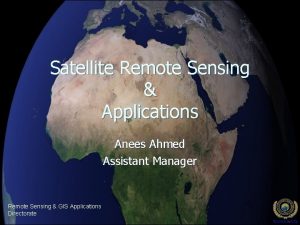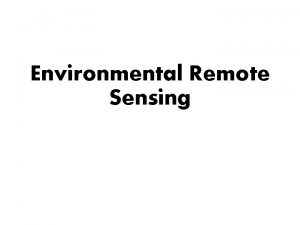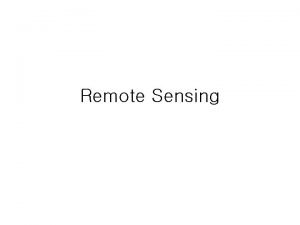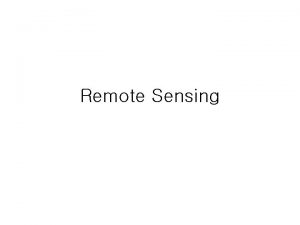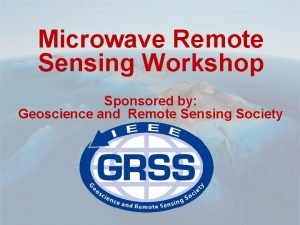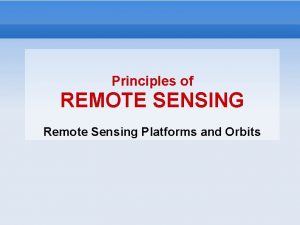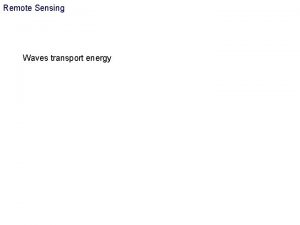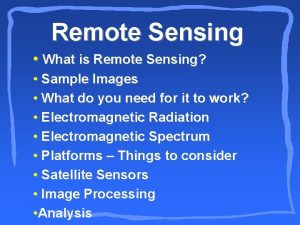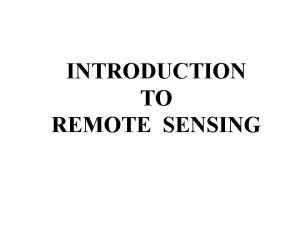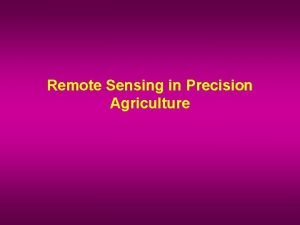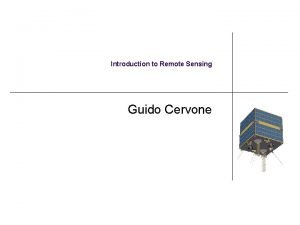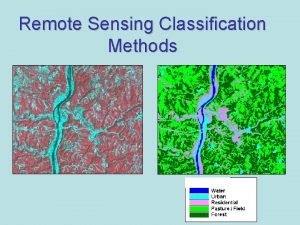CONCEPTS AND FOUNDATION OF REMOTE SENSING HOW REMOTE













- Slides: 13

CONCEPTS AND FOUNDATION OF REMOTE SENSING

HOW REMOTE SENSING WORKS • Illumination (source) • Radiation and the atmosphere(passing through atmosphere twice) • Interaction with target • Recording of energy by sensor • Transmission, reception or processing



ELECTROMAGNETIC SPECTRUM(EMR)

EMR ranges from shortest (gamma and xray)to longest wavelengths(ra dio and microwaves)

WAVELENGTHS( VISIBLE PORTION) • The light our eyes or remote sensors can detect becomes the part of remote sensing • Wavelength ranges from 0. 4 to 0. 7 micrometer

WAVELENGTHS (VISIBLE PORTION) colours Wavelength range violet 0. 4 - 0. 446 Blue 0. 446 -0. 500 Green 0. 500 -0. 578 Yellow 0. 578 -0. 592 Orange 0. 592 -0. 620 red 0. 620 -0. 7

WAVELENGTHS(INVISIBLE PORTION) • A lot of radiation that our eyes cant detect (invisible) but can be detected by the sensors that also become part of remote sensing e. g • IR (0. 7 to 100 micrometer) Reflected IR ( 0. 7 -3. 0 micrometer) Thermal IR (3. 0 -100 micrometer) The recent interest for RS is Microwaves (1 mm to 1 m)

COLOURS • Primary colours RGB

COMPONENTS OF RS • • • Energy source Platforms Sensors Detectors processing

INTERACTION WITH THE TARGET a)Absorption (by gases, ozone best absorber of UV) b)Scattering • Rayleigh scattering ( upper surface, particles size< incident wavelength, blue sky) • MIE scattering (particles size=incident wavelength, dust, smoke, water droplets, (dark appearance of sky)) • Non-selective scattering (particles size>incident wavelength, as aerosoles, happens in lowest portions of atmosphere, causes haze, fog, white clouds, c)Transmission

INTERACTION WITH THE TARGET • Atmospheric windows : where portions of EM spectrum can pass through the atmosphere. • Atmospheric blinds ….
 Ifov and fov in remote sensing
Ifov and fov in remote sensing National authority for remote sensing and space sciences
National authority for remote sensing and space sciences Energy transfer
Energy transfer Remote sensing platforms
Remote sensing platforms Active vs passive remote sensing
Active vs passive remote sensing Ideal remote sensing system
Ideal remote sensing system Digital number in remote sensing
Digital number in remote sensing Limitations of remote sensing
Limitations of remote sensing Idealized remote sensing system
Idealized remote sensing system Aggregation ap human geography
Aggregation ap human geography Choropleth map definition ap human geography
Choropleth map definition ap human geography Parallax remote sensing
Parallax remote sensing Strip camera in remote sensing
Strip camera in remote sensing Remote sensing image
Remote sensing image
